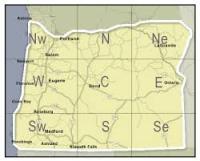FOR IMMEDIATE RELEASE:
November 1, 2014
World AIDS Day—December 1st, 2014
Eugene, OR—November 20, 2014: December 1st, 2014 is World AIDS Day and the month of December is recognized as AIDS Awareness Month. World AIDS Day is an opportunity for people worldwide to unite in the fight against HIV, show their support for people living with HIV and to remember the people who have died. “Every 10 minutes, someone in the United States is infected with HIV,” said HIV Alliance Executive Director, Diane Lang. “This alarming statistic is a reminder that there is still a great deal of work to be done.”
The first World AIDS Day was December 1, 1988.public information officers, James W. Bunn and Thomas Netter, who were working the newly formed Global Programme on- a part of the United Nation’s World Health Organization- came up with the idea of a global day of recognition as a way to increase awareness and prevention efforts around the still growing epidemic. Bunn recommended the date of December 1st as a date that was likely to gain maximum news coverage around this burgeoning disease. On October 27, 1988, the UN General Assembly officially recognized that the World Health Organization declared December 1, 1988 to be World AIDS Day. World AIDS Day has become the longest-running awareness and prevention initiative of its kind in the history of public health.
“While the medications have improved dramatically over the years, we still do not have a cure for this disease,” stated Renee Yandel, Program Director for HIV Alliance. “We are hopeful that some day in the future we will truly celebrate World AIDS Day as a way to mark the end of this epidemic.”
HIV Alliance was founded in 1994 to prevent new infections of HIV and provide compassionate care to individuals living with this devastating disease. Currently the organization provides care coordination, nurse case management and pharmaceutical support to people living with HIV in 11 counties in Oregon (Lane, Douglas, Josephine, Lake, Klamath, Coos, Curry, Lincoln, Marion, Clatsop and Jackson counties). HIV Alliance has an office in Eugene and an office in Roseburg, as well as AIDS-Certified nurses in Josephine, Douglas and Lane counties. HIV Alliance is a model for effective and efficient HIV prevention, advocacy, care and education programs.
www.hivalliance.org
facebook.com/hivalliance
twitter.com/hivalliance
###




